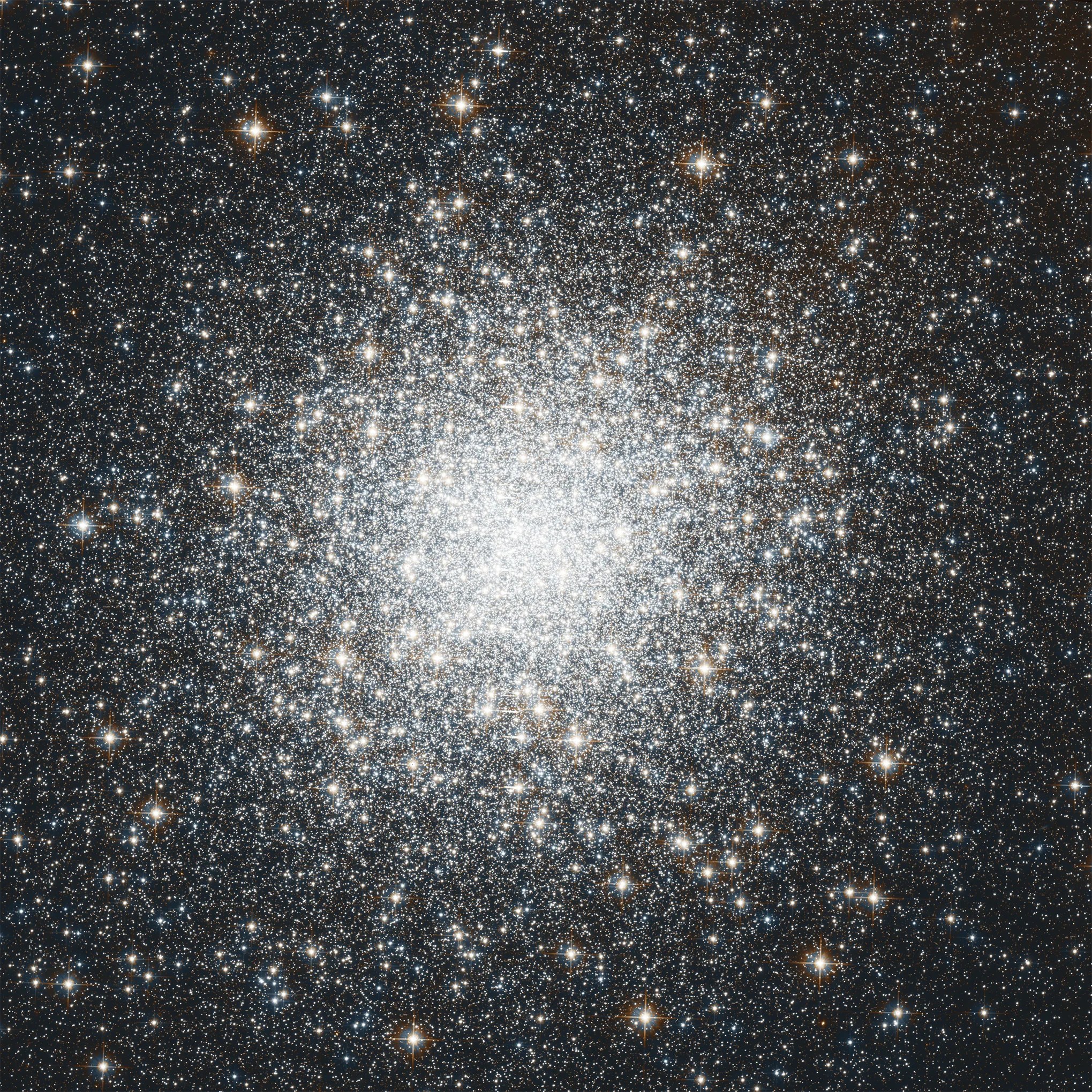Messier 9
Messier 9 is the one of the closest globular clusters to the center of our Milky Way galaxy.
Distance
25,000 light-years
Apparent Magnitude
8.4
constellation
Ophiuchus
object type
Globular Cluster

Located only 25,000 light-years away in the constellation Ophiuchus, M9 is one of the closest globular clusters to the center of our Milky Way galaxy. The stars in the globular cluster are gravitationally bound to each other, with most of the stars concentrated at the cluster’s center. This large central mass pulls outer stars inward and causes globular clusters to have a spherical shape. M9’s proximity to the much greater mass at the center of the Milky Way has warped the cluster’s shape, though, so it appears less spherical than other objects of its kind.
M9 was discovered by Charles Messier in 1764. It has an apparent magnitude of 8.4 and can be observed using a small telescope. The best time of year to spot the cluster is during the month of July.
This Hubble image of M9’s core was created from exposures taken in visible, infrared and ultraviolet light. The stars in the image have different colors based on their properties. Red stars have lower surface temperatures, while blue stars are extremely hot.
For more information on Hubble’s observations of M9, see:

Explore Hubble's Messier Catalog
The following pages contain some of Hubble’s best images of Messier objects.

Messier 1 (The Crab Nebula)
Better known as the Crab Nebula, Charles Messier originally mistook Messier 1 for Halley’s Comet, which inspired him to create…

Messier 2
Hubble's image of Messier 2 is comprised of visible and infrared wavelengths of light.

Messier 3
Messier 3 holds more than 500,000 stars.




